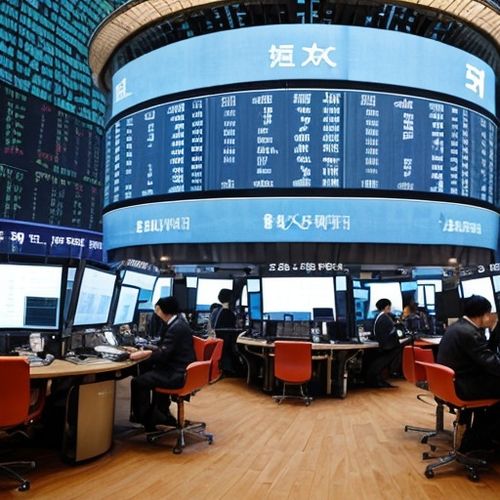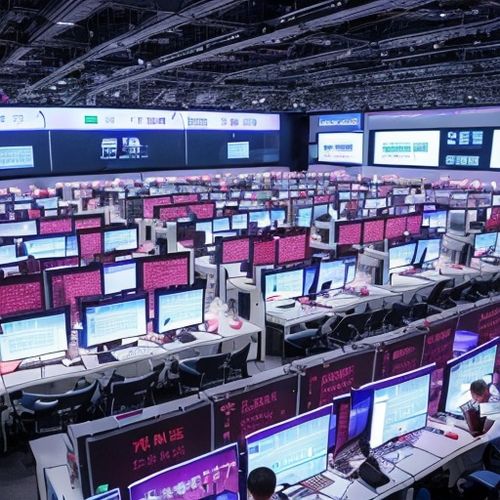In an era defined by climate urgency, social inequality, and corporate accountability, Environmental, Social, and Governance (ESG) metrics have emerged as the compass guiding trillions of dollars in global investments. Once a niche consideration for ethically minded investors, ESG ratings now sit at the heart of financial decision-making, redefining risk assessment and recalibrating capital allocation across industries and borders. From Wall Street to Shanghai, asset managers, pension funds, and sovereign wealth funds increasingly prioritize ESG performance as a non-negotiable criterion for investment. This seismic shift is not merely altering portfolios—it is rewriting the rules of capitalism itself. As capital migrates toward sustainable and socially responsible ventures, industries clinging to outdated practices face existential threats, while innovators harnessing ESG principles unlock unprecedented growth. The question is no longer whether ESG matters, but how deeply it will transform the global economy.
The Rise of ESG as a Universal Language for Capital Allocation
The financial world has long sought a common framework to evaluate risks beyond balance sheets, and ESG ratings have filled this void. By quantifying intangible factors like carbon footprints, labor practices, and board diversity, these ratings provide a standardized lens to compare companies across sectors and geographies. Institutional investors, managing over $120 trillion in assets under the Principles for Responsible Investment (PRI), now routinely screen investments using ESG criteria. This standardization has turned ESG data into a currency of trust—a company’s rating can sway its cost of capital, access to loans, and even its stock valuation. For instance, firms with high ESG scores often enjoy lower borrowing costs, as lenders perceive them as lower-risk long-term bets. Conversely, industries like fossil fuels or tobacco, plagued by poor ESG metrics, see capital evaporate as divestment campaigns gain momentum. The result is a self-reinforcing cycle: as more capital flows to ESG leaders, their competitive advantage grows, while laggards face mounting pressure to adapt or perish.
ESG as a Catalyst for Industrial Transformation
The redistribution of capital driven by ESG priorities is accelerating the decline of carbon-intensive sectors and fueling the rise of green technologies. Energy markets offer a stark illustration. Between 2016 and 2023, global investments in renewable energy projects surpassed $2.8 trillion, while coal-fired power plant financing collapsed by 75%. This divergence isn’t solely due to policy mandates—it reflects investors’ calculations that renewables align with both ESG goals and long-term profitability. Similarly, automakers pivoting to electric vehicles (EVs) have attracted billions in ESG-aligned funding, while traditional manufacturers face shareholder rebellions over sluggish decarbonization plans. Beyond energy, ESG scrutiny is reshaping supply chains. Tech giants like Apple and Microsoft now demand that suppliers disclose emissions data and adopt renewable energy, effectively pushing ESG standards downstream. This ripple effect ensures that even small and mid-sized enterprises must embrace sustainability to remain part of global value chains.
Emerging Markets: Navigating the ESG Tightrope
For developing economies, the ESG revolution presents both peril and promise. On one hand, nations reliant on extractive industries confront dwindling foreign investment as ESG-focused funds shun oil, gas, and mining projects. Angola and Nigeria, for example, have seen hydrocarbon investments plummet despite rising energy prices, as European banks withdraw from fossil fuel financing. On the other hand, ESG criteria are unlocking capital for countries that position themselves as sustainability pioneers. Chile’s green hydrogen initiatives and Vietnam’s wind energy boom demonstrate how emerging markets can attract ESG-driven investments by aligning national strategies with global climate goals. Moreover, ESG frameworks are fostering innovative financing models. Kenya’s sustainability-linked bonds and Indonesia’s debt-for-nature swaps illustrate how developing nations leverage ESG metrics to access affordable capital while addressing environmental challenges. Yet, the path remains fraught with inequities. Critics argue that Western-designed ESG standards often overlook local socio-economic contexts, penalizing countries lacking infrastructure to meet stringent benchmarks.
The Geopolitical Reordering of Capital and Influence
ESG’s financial clout is redrawing geopolitical battle lines. The European Union, aiming to cement its role as a sustainability regulator, has rolled out ambitious ESG disclosure laws like the Corporate Sustainability Reporting Directive (CSRD), forcing multinationals to comply or lose access to EU markets. Meanwhile, China’s aggressive investments in solar, EVs, and battery technologies—partly driven by domestic ESG policies—have positioned it as a clean tech exporter, challenging Western dominance. Even petrostates like Saudi Arabia and the UAE are rebranding as ESG-compliant investors, channeling oil wealth into green infrastructure funds and carbon-neutral urban projects. However, this ESG-driven geopolitics risks fragmentation. Competing regional standards—such as the U.S. emphasis on governance issues versus Europe’s climate-centric approach—could create conflicting compliance burdens for global firms. The absence of a unified global ESG framework may lead to capital market Balkanization, where companies tailor disclosures to satisfy regional regulators rather than pursue holistic sustainability.
Challenges and the Road Ahead
Despite its transformative potential, the ESG ecosystem faces critical growing pains. Rating inconsistencies—where firms receive wildly divergent scores from different agencies—undermine credibility and enable “ESG-washing.” The lack of standardized metrics allows companies to cherry-pick data, exaggerating progress while obscuring shortcomings. Regulatory responses are emerging, with the International Sustainability Standards Board (ISSB) working to harmonize disclosures, but progress remains slow. Additionally, the focus on measurable ESG factors risks neglecting harder-to-quantify issues like indigenous rights or biodiversity loss. Yet, the trajectory is clear: as climate disasters intensify and social inequities dominate headlines, investors will demand ever-greater ESG rigor. Technologies like AI-powered ESG analytics and blockchain-enabled supply chain tracking promise to enhance transparency, turning subjective ratings into actionable insights. The future may see ESG evolve beyond risk mitigation into a driver of value creation, where sustainable practices directly correlate with market outperformance.
The ESG revolution signals a profound philosophical shift: capital is no longer just a tool for wealth generation but a lever for planetary stewardship. By tying financial returns to environmental and social outcomes, ESG ratings have weaponized capitalism against its own worst excesses. While imperfections persist, the direction is irreversible. Companies and nations that view ESG as a strategic imperative—not a compliance hurdle—will dominate the next era of global growth. As $30 trillion in generational wealth transfers to Millennial and Gen Z investors—demographic cohorts prioritizing purpose alongside profit—the ESG wave will only intensify. In this reordered world, financial success and sustainability are converging into a single narrative. The recalibration of global capital flows is not just reshaping markets; it is redefining humanity’s relationship with progress itself.

By Noah Bell/Mar 30, 2025

By Christopher Harris/Mar 30, 2025

By Benjamin Evans/Mar 30, 2025

By Victoria Gonzalez/Mar 30, 2025

By Daniel Scott/Mar 30, 2025

By Ryan Martin/Mar 30, 2025

By Sarah Davis/Mar 30, 2025

By Samuel Cooper/Mar 30, 2025

By Jessica Lee/Mar 30, 2025

By Jessica Lee/Mar 30, 2025

By Christopher Harris/Mar 30, 2025

By John Smith/Mar 30, 2025

By Ryan Martin/Mar 30, 2025

By Amanda Phillips/Mar 30, 2025

By Eric Ward/Mar 30, 2025

By Emily Johnson/Mar 30, 2025

By Amanda Phillips/Mar 30, 2025